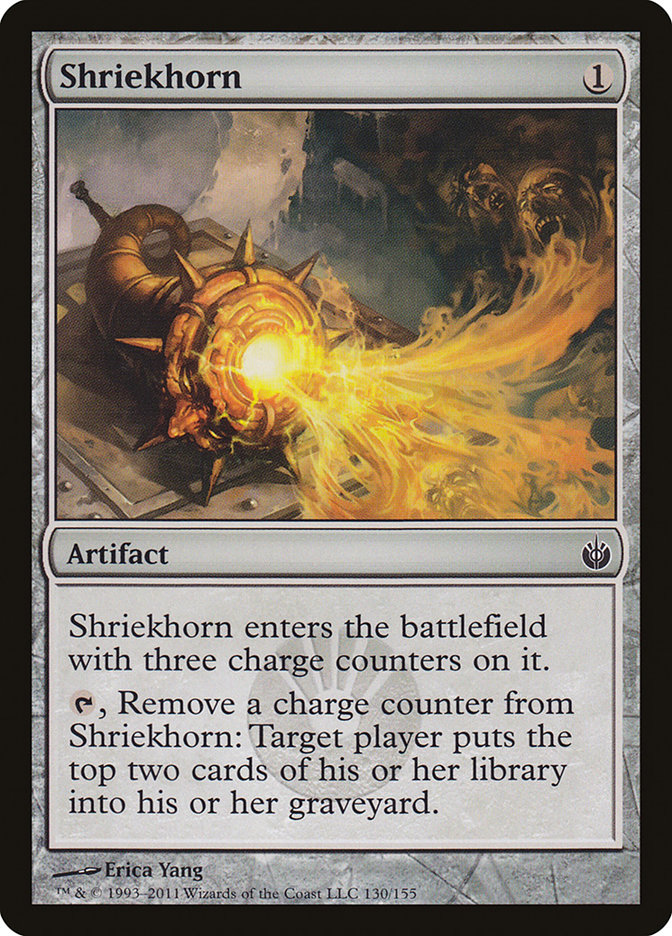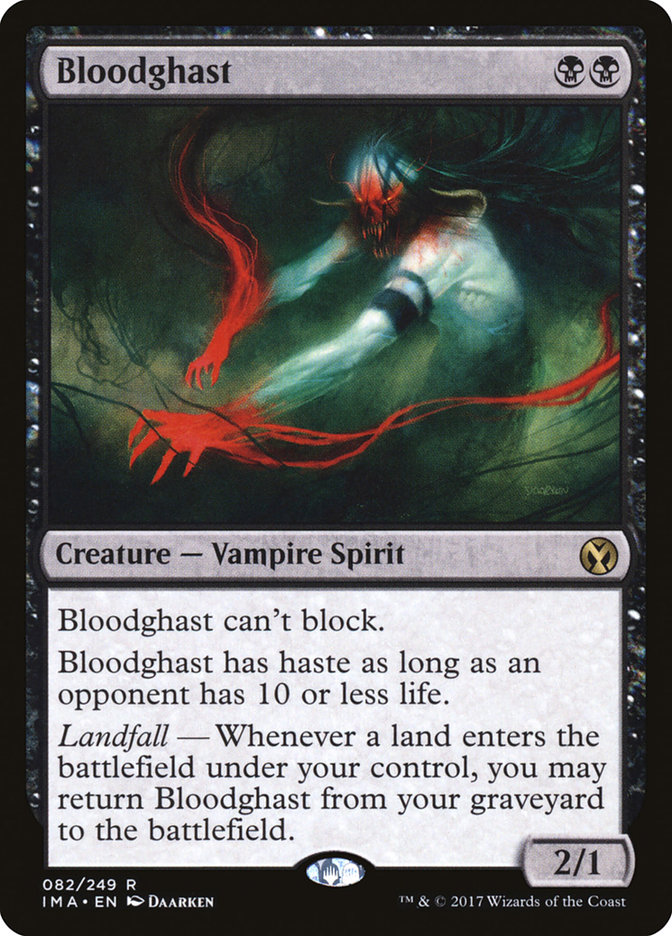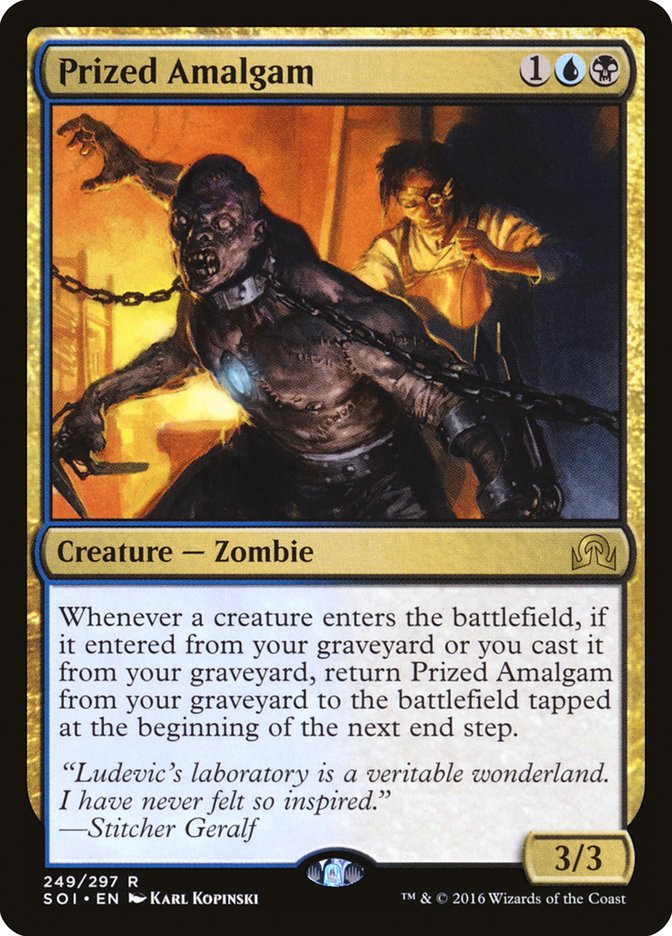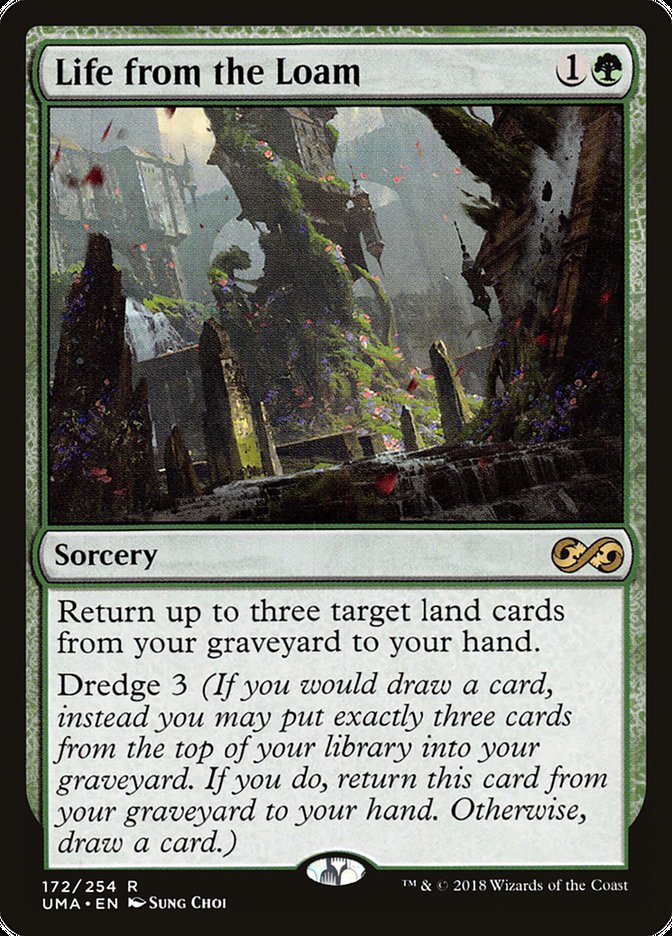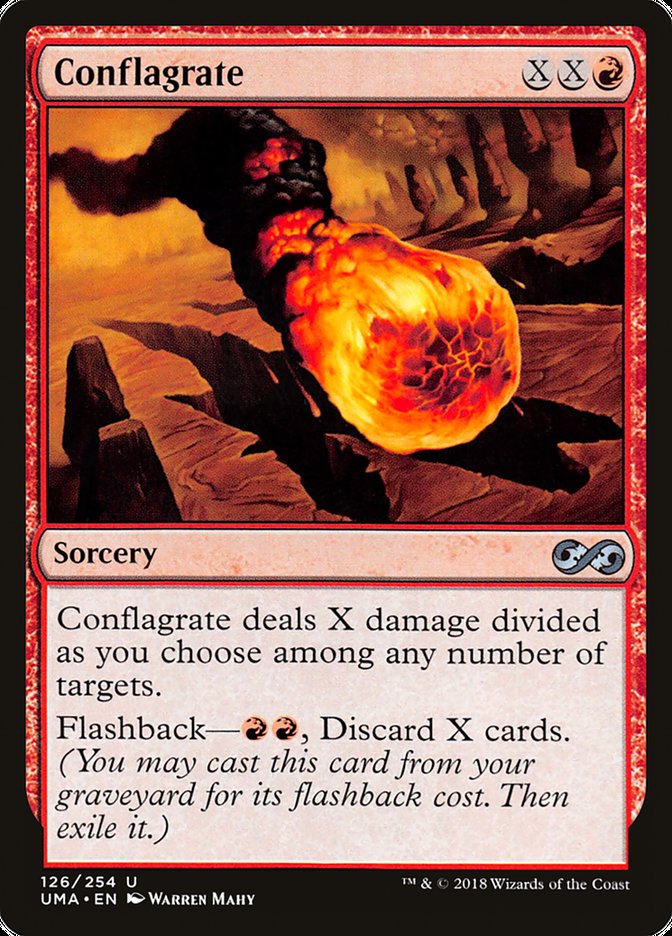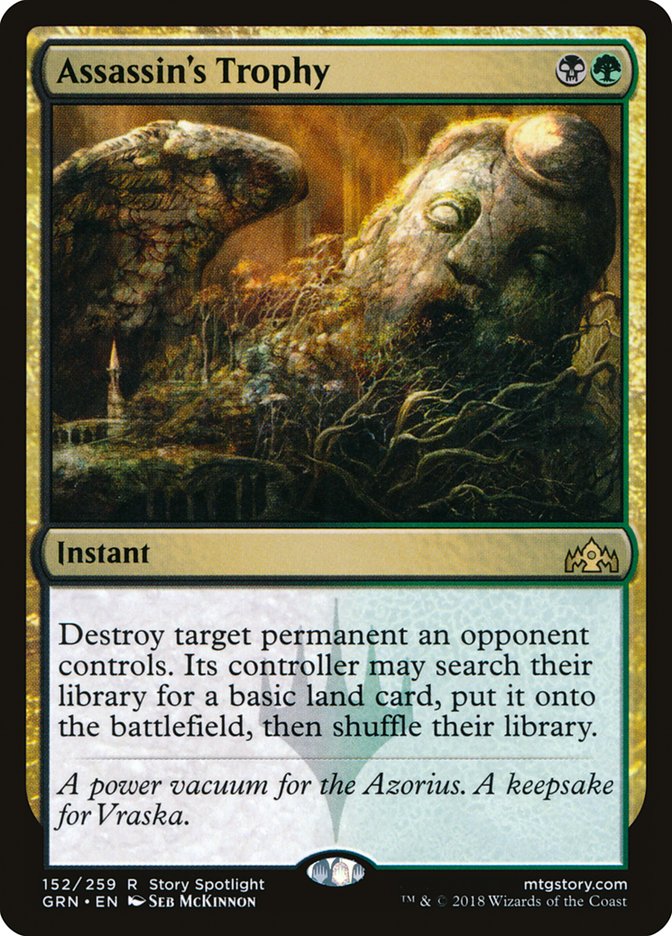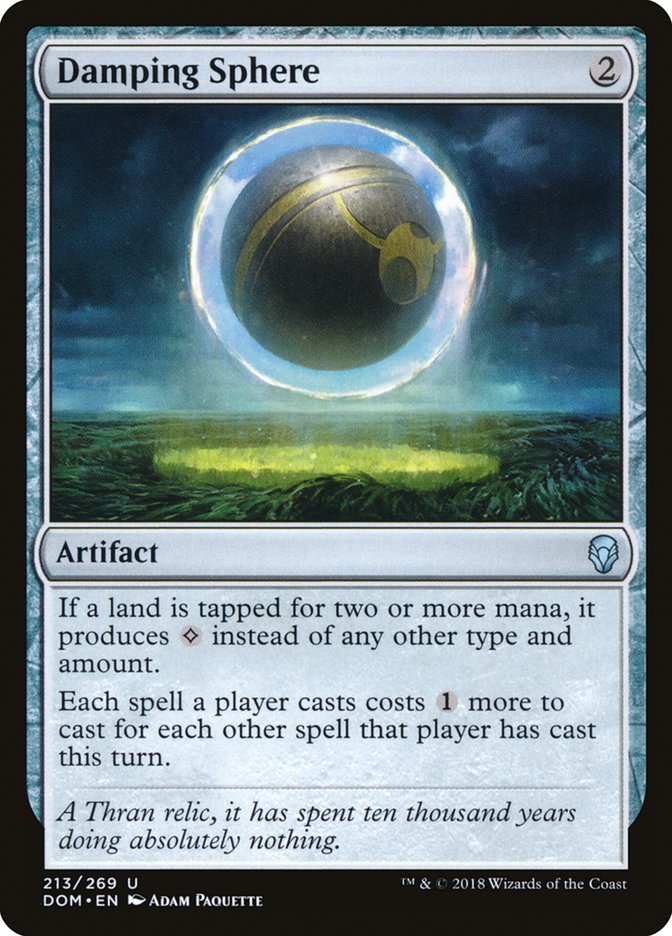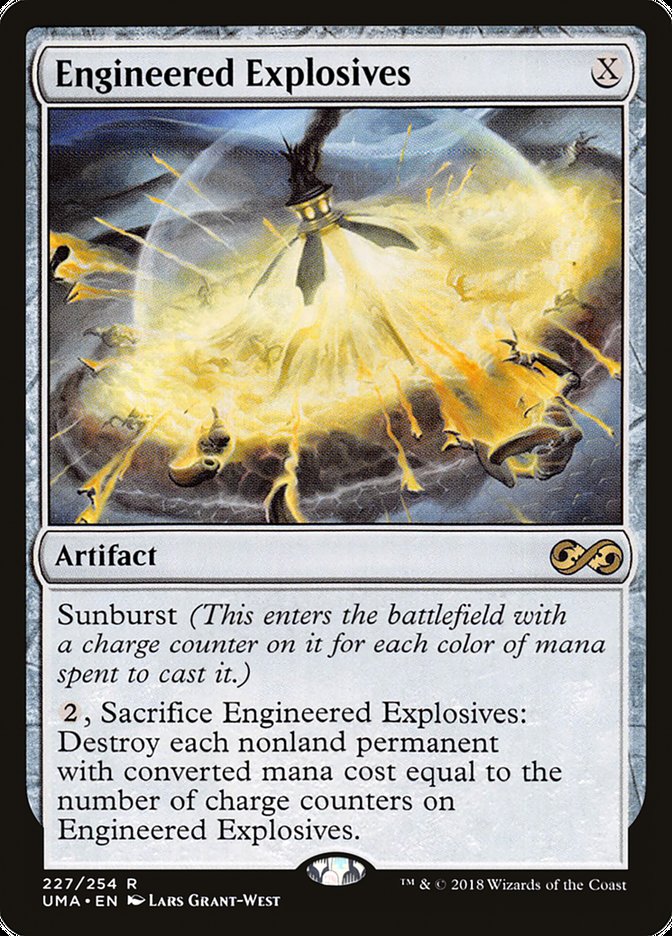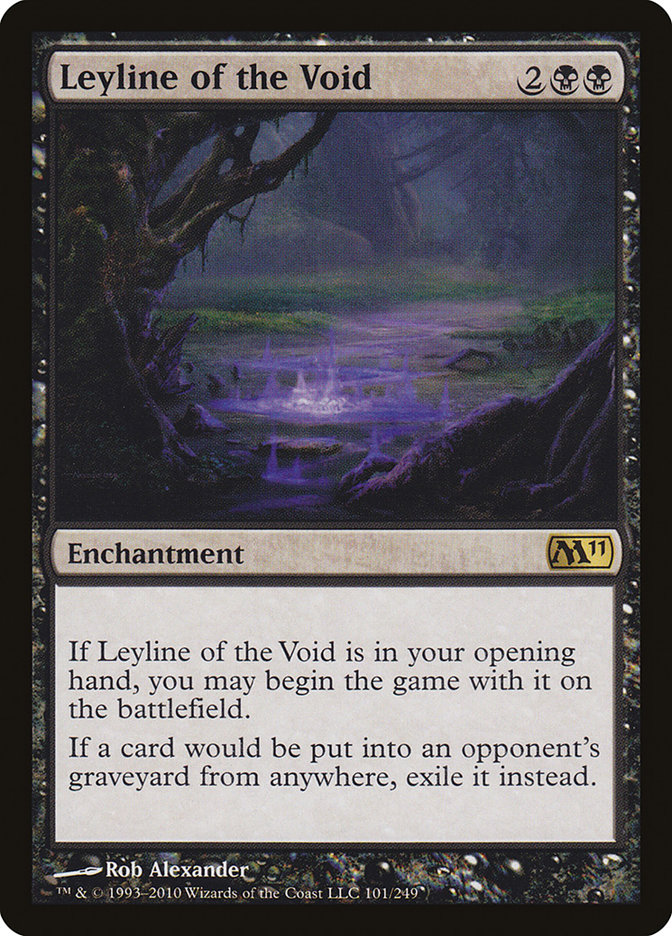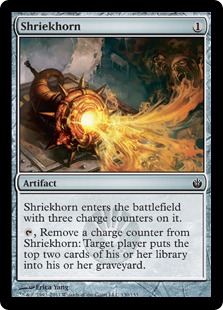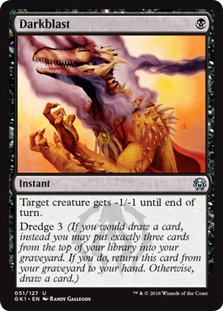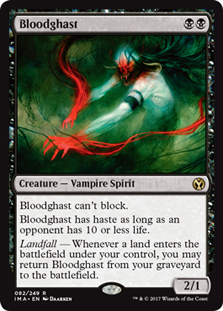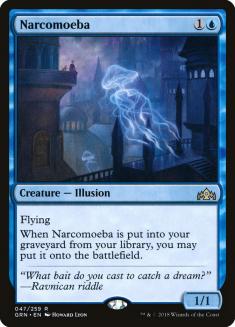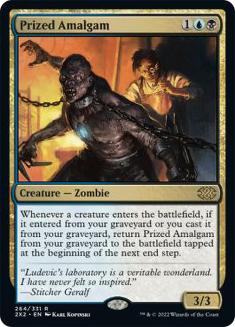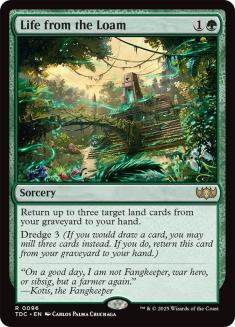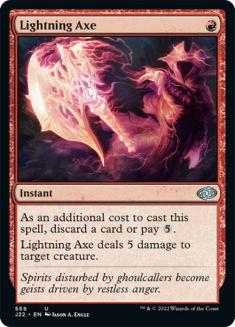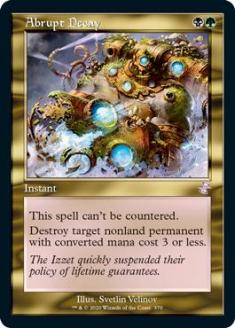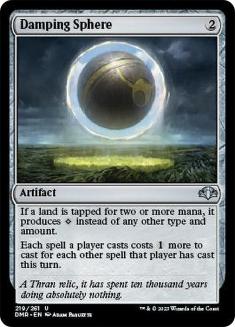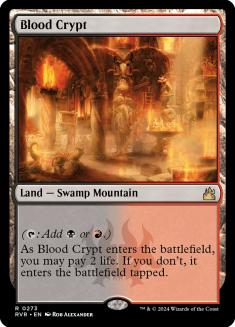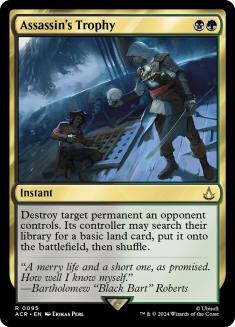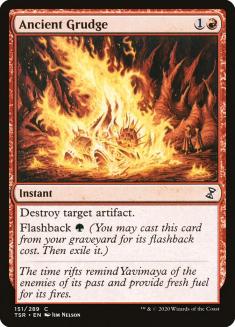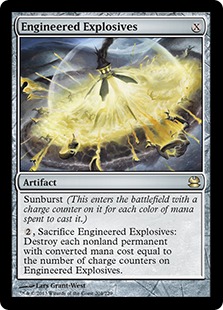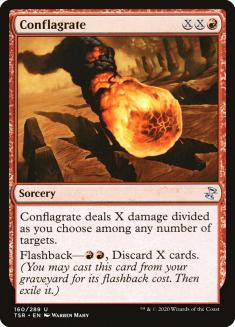Since Krark-Clan Ironworks was banned from Modern, Dredge has been my deck of choice. I’m an easy sell on a Faithless Looting deck, since I think it’s better than Brainstorm in Legacy, and Creeping Chill is incredible in Dredge. Creeping Chill is also particularly well-positioned in Modern right now. Dredge is like the unfair version of Martyr or Soul Sisters – if your opponent is primarily concerned with your life total, you probably have a good matchup. If your opponent routinely does damage in increments of more than ten or doesn’t really care about your life total, you’re a lot more likely to have problems, particularly if they’re very proactive. Where Dredge performs better than other lifegain decks is against reactive strategies, which usually don’t have enough of the right kinds of reaction.
What this means more precisely is that Dredge is great against Burn, Grixis Death’s Shadow, Izzet Phoenix, Azorius Control, and usually most creature decks, and bad against fast combo decks – Amulet Titan, Tron, Grishoalbrand, and Selesyna Hexproof. It’s close against decks that are in the middle, like TitanShift and Hardened Scales.
Almost any specific player can give their deck a good matchup against Dredge if they want it badly enough, but that’s not really how Modern works. Modern demands that players be able to interact with the graveyard, but they have a lot of other needs in their sideboard as well, so they can’t usually play that many cards that interact with the graveyard and not all graveyard hate is the same. Additionally, Dredge has a lot of counterplay, so I don’t really consider the amount of hate Dredge currently faces to be particularly daunting.
The first stage of the game is mulliganing, and Dredge mulligans a lot. I hate keeping any hand with only one land unless it has a Faithless Looting, and I rarely keep hands without either Faithless Looting or Cathartic Reunion. I’ll make an exception for hands with two or more lands with a green source and two Shriekhorns, or maybe hands with a Shriekhorn, a Life from the Loam, two lands with a green source, and good other spells (especially looking for no Narcomoeba). I also wouldn’t want to keep a hand with Cathartic Reunion and no Dredge card. This is all somewhat demanding, but as long as you have a good start, it really doesn’t matter how many cards are in your opening hand, so I’m not that scared to mulligan to five cards.
Playing the games after that is pretty straightforward, but here are a few tricks and tips:
Think carefully about when you activate Shriekhorn. I default to my opponent’s second main phase for my first activation if I cast it on Turn 1 in case I hit exactly Narcomoeba and Prized Amalgam so that I can attack with the Prized Amalgam on Turn 2. Often you want to use it in your upkeep to look for a card to Dredge, but if you already have the exact card you want to dredge in your graveyard, it’s better to dredge first so that, if you hit a Narcomoeba, you can Shriekhorn in response to the trigger to look for an Amalgam to return as well.
Bloodghast has a “may” ability and Prized Amalgam does not. Consider leaving Bloodghasts in your graveyard to play around Anger of the Gods and Ugin, the Spirit Dragon, especially if you can hold up a fetchland.
Prioritize making all your land drops. Never start dredging on one land without a green source because you’ll be locked out of playing spells and dredging this way is too slow. If you have a green source, I could understand dredging a Stinkweed Imp to try to find Dakmor Salvage, but I’d still likely rather draw normally to try to find my second land. Once you have two, dredge aggressively to try to find Life from the Loam and lands to return to your hand and make your land drops that way. The reason you want to keep making land drops is that having more mana to work with is the best way to use Life from the Loam to get a big hand for Conflagrate.
I think of Dredge as primarily a burn deck. Between Creeping Chill and Conflagrate, it’s not that hard to deal a full twenty damage to your opponent without attacking, but the creatures certainly make things easier. Getting your opponent to ten to give your Bloodghasts haste makes pushing damage quite a bit easier and should be prioritized fairly highly.
Before moving onto the details of how to sideboard, I need to go over my specific list and the reasons for my choices:
Creatures (17)
Lands (19)
Spells (24)

It’s customary for Dredge players to play all four Nature’s Claims and three Ancient Grudges at the moment, but I think that’s overkill. Very few decks play enough copies of Leyline of the Void or other hate cards frequently enough that I want to bring that many cards that might be dead. In this case, I think less is more and the other sideboard cards I get do more for me. The other big departure from most lists in my deck is that I’m playing two Darkblasts and pme Golgari Thug instead of the other way around. I’m doing this because I think I’d want another Darkblast in my sideboard if I didn’t have it, and I’d rather save the sideboard slot, though I’m considering switching to two Golgari Thugs and just not having access to the second Darkblast.
I like Assassin’s Trophy because I want to be able to bring in more answers to Leyline of the Void that aren’t dead if my opponent doesn’t have it, but I certainly feel the drawback in some matchups, so I’m wondering about cutting one for the fourth Lightning Axe, which is really good when it’s good, as there are a lot of matchups where you know your opponent will always have a good target.
Damping Sphere, Engineered Explosives, and Leyline of the Void are kind of flex slots, and I erred toward cards that I think are generally good in Modern, with a nod to Leyline of the Void because it’s particularly good in Dredge, as you so rarely draw unknown cards outside of your opening hand.
Sideboarding
This is the tricky part, as with most decks, but obviously with Dredge you must be careful because your deck is already doing a balancing act and you don’t want to break anything. Some general principles before getting to specific matchups:
- I sideboard out my second Mountain if I’m on the draw and my opponent won’t make me search my library for basic lands.
- I sideboard out Darkblast if casting it isn’t good.
- I almost never sideboard out any Creeping Chills, but I could imagine doing it if lifegain doesn’t matter and I’m sideboarding a lot of cards, especially if I’m also planning to cast Nature’s Claim.
- You can justify cutting the fourth copy of almost anything if you know your opponent has a lot of Surgical Extractions, but I don’t like risking it by doing this with my best cards like Stinkweed Imp. If I’m sideboarding in this way to minimize the impact of Surgical Extraction, I’ll usually start by trimming one each of Prized Amalgam, Bloodghast, and Narcomoeba, and then Life from the Loam.
- I’ll trim Shriekhorn fairly often, and I’m willing to cut all of them if I’m bringing in Lightning Axe. Both of these cards serve as ways to get a first dredge card in the graveyard, and with the way I mulligan, I might be paying too much attention to this, but it does still come up. For example, if your hand has what you need, it’s better to get a dredge card in your graveyard before casting your first Faithless Looting.
- I cut some number of creatures a lot. Bloodghasts get trimmed against opponents that block well on the ground. Narcomoeba gets trimmed when I need space and I don’t need to block in the air and Bloodghast is good. Prized Amalgam gets trimmed if I’m cutting so many creatures that it’ll be hard to return or if my opponent is very bad against Bloodghast, such that I don’t even need the help.
- I’ll trim one, or maybe at most two, Catharic Reunions if I think my opponent is likely to be able to counter them. I would never cut Shriekhorn while doing this.
VS Izzet Phoenix
Out:
or
In:
The most important thing is killing their Thing in the Ice, so you bring in all the removal that does that. If you can keep that off the battlefield, you should be able to race them, so I don’t think you want to worry about Leyline of the Void for Arclight Phoenix. Sideboarding is a question of how often you think they’re going to Surgical Extraction you. Some players might just have two, but some might have more and Snapcaster Mages. I believe I would currently err toward trimming to threes of my least essential payoffs (Creeping Chill is just too good; I know that means it’s the most likely to get exiled, but the payoff is too high if they don’t have it).
VS Burn
Out:
In:
I think Creeping Chill is so good in this matchup that Prized Amalgam isn’t important to your gameplan, and I prefer Narcomoeba over Bloodghast because I think a single chump blocker can be better than an attacker. I’m looking to do a substantial amount of my damage with my own burn spells here.
VS Tron
Out:
In:
It can be slightly hard to return Prized Amalgam this way, but it’s not important to return it multiple times and Relic of Progenitus will often stop you from returning it anyway. Narcomoeba isn’t a meaningful clock on its own, and you need to pressure and disrupt them, so it doesn’t do enough to earn its keep.
Out:
In:
This is the most extreme transformation the deck is capable of and the only matchup I’ve found where I want to cut Creeping Chill. Your plan is to become a control deck and use Life from the Loam with Faithless Looting and Cathartic Reunion as your card advantage engine. You’ll still dredge frequently, but if they have Grafdigger’s Cage and you have to draw for an answer, your library should be very live.
Their threats can easily outclass yours, so you need to answer them. They have much less card advantage than you, so you can actually just grind them out using Stinkweed Imp the way it was originally intended.
VS Dredge
Out:
In:
Creatures are pretty good, since blocking is very hard. If one player can stick a Leyline, they almost definitely win, so you have to be able to fight over that, and if not, then it’s just about dredging more, faster, which largely just comes down to having a better draw. Conflagrate’s a pretty easy trim, and I could actually see cutting the second one, but it’s so good in the deck that that’s really hard to justify. I’m basically just trimming the cards that are worst at what they do. Note that if you can take your opponent off green mana with Assassin’s Trophy, that might be worth doing.
Dredge continues to be one of the best decks in Modern and is the deck I’d easily recommend playing at SCG Regionals this weekend.


